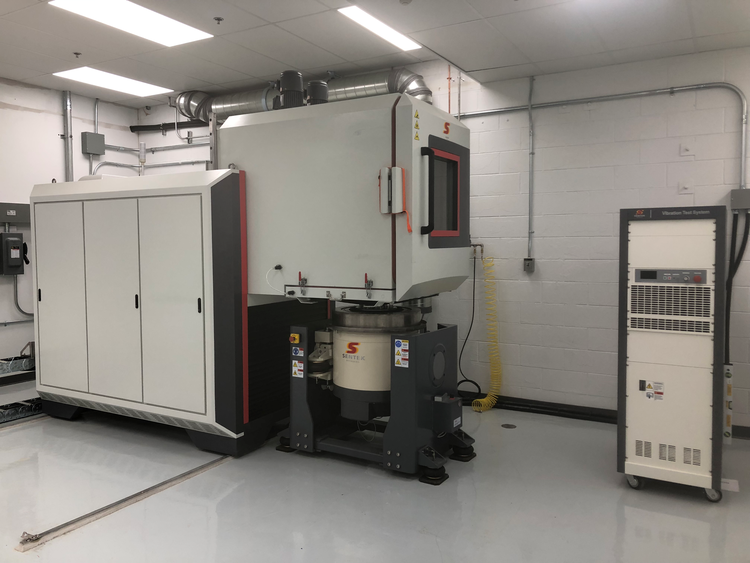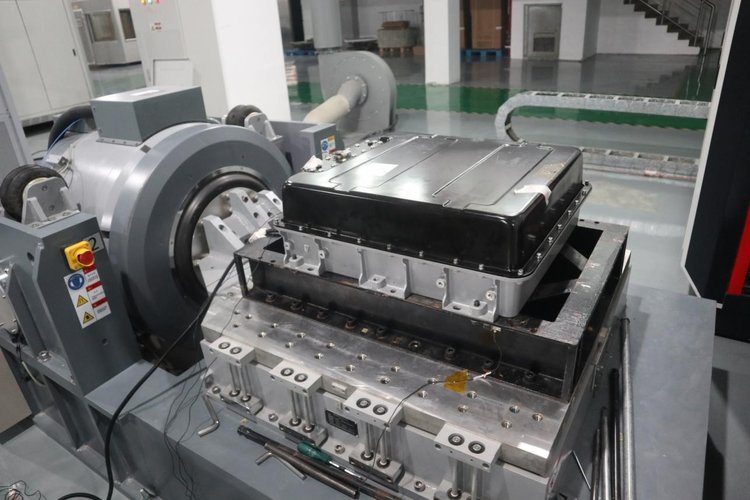Users can add CAN bus to their Spider system to monitor received data and display data through EDM software. (click to enlarge)
MIL-STD-810H for Combined Environmental Testing of Batteries (click to enlarge)
Solutions for Battery Testing in a Combined Environment
Research into new-technology batteries has accelerated over the last decade with the promise of energy density being significantly improved. This research has led to more lithium-ion battery applications in aircraft, electric and hybrid vehicles (EVs and HEVs), 2 and 4-wheel light electric vehicles (LEVs) and personal items such as laptops and wearable devices. Controlled release of energy from these new-technology batteries provides useful electrical power. Uncontrolled release of the energy can result in hazardous situations such as smoke, fire, explosions or any combination thereof.
Uncontrolled energy releases can be caused by damage from a wide-variety of physical/environmental conditions or events such as temperature, humidity, vibration and shock. These conditions, be they from normal operation or a vehicle crash, can cause damage to batteries with catastrophic results. In a worst-case scenario, the damage can result in a rapid temperature rise of hundreds of degrees leading to thermal runaway and a risk of fire and explosion. The problems caused by environmental conditions or physical events can be reduced or eliminated by the proper physical design of batteries and related mechanical systems. However, compliance to an applicable recognized standard must be validated by testing before the battery or related electro-mechanical component can be considered safe for its intended use. Battery safety standards and regulations require testing in combined abusive environmental conditions found in actual battery applications. Battery standards for EV/HEV, 2 and 4-wheeled vehicles, laptops and wearable devices, include, but are not limited to the following:
IEC 62660-2:2016 Secondary Lithium-ion Cells for the Propulsion of Electrical Road Vehicles Reliability and Abuse Testing
IEC 62113-2:2017 Secondary Cells and Batteries Containing Alkaline or other Non-Acid Electrolytes – Safety Requirements for Portable Sealed Secondary Cells, and for Batteries Made from Them, for Use in Portable Applications.
IEC 62660-3:2016 Secondary Lithium-ion Cells for the Propulsion of Electrical Road Vehicles – Safety Requirements
SAE J2464:2009 Electric and Hybrid Electric Vehicle Rechargeable Energy Storage System (RESS) Safety and Abuse Testing
UN38.3:2015 Recommendations on the Transport of Dangerous Goods – Manual of Tests and Criteria – Section 38.3 Lithium Batteries
BATSO 01 Manual for Evaluation of Energy Systems for Light Electric Vehicle (LEV) – Secondary Lithium Batteries
UL 2271 Batteries for Use in Light Electric Vehicle (LEV) Applications
In recognition of the detrimental effects of combinations of temperature, humidity, vibration and input electrical power on electrical and electro-mechanical components with regard to safety, integrity, and performance during ground and flight operations, MIL-STD-810H, has been released with Method 520.5 added to cover the testing of components in combined environments. Testing in combined environments may induce failures that would not be exhibited during individual environment testing. New to this test method is the addition of input electrical power as an environment; to include voltage/frequency variations, and transients (if applicable) which are inherent to the system. While it is virtually impossible to replicate the complex mix of environments which can be seen during transport, storage, operation, and maintenance, the intent is to apply representative combinations of stresses to the device under test to determine performance and capabilities.
Crystal Instruments provides powerful solutions for combined mechanical, environmental and thermal testing required by a wide-range of standards and specifications. The Spider-101i temperature and humidity controller with IEEE time synchronization is the optimum solution for combined temperature, humidity and vibration testing of batteries, electrical and electro-mechanical components. It is the only controller with the following advantages:
One user interface for setting up run schedules for temperature, humidity, vibration, etc.
Fully networked allowing users to connect multiple hardware devices through Ethernet which allows one PC to control all devices at the same time
Ability to extract battery information through a CAN bus and take various actions including emergency shutdown*
Access and control with one software application
Data acquisition is accurately time-synchronized
One combined test report – If test reports are generated separately from several apps, the time clock and schedules will not be coordinated, unlike the integrated test report generated by Crystal Instruments’ EDM THV Software
*The Controller Area Network bus or simply CAN bus protocol is a standard used to allow Electronic Control Units (ECUs) to communicate in an efficient manner with minimal wiring and without a central computer. Originally developed for automotive applications, it has gained wide acceptance in automotive and aerospace industries. The ability to acquire battery (and individual cell) information such as voltage, current, temperature, etc. during combined temperature, humidity and vibration testing and take predefined action(s) is a major advantage only available with the Crystal Instruments’ Spider-101i Controller. The intuitive design of the Spider-101i EDM software allows customers to tell from the Run Log when and why a test stopped, or action was taken. When CAN bus data received in Spider-101i EDM software is displayed and compared to data received in a dedicated device with CAN bus software the values are identical.



